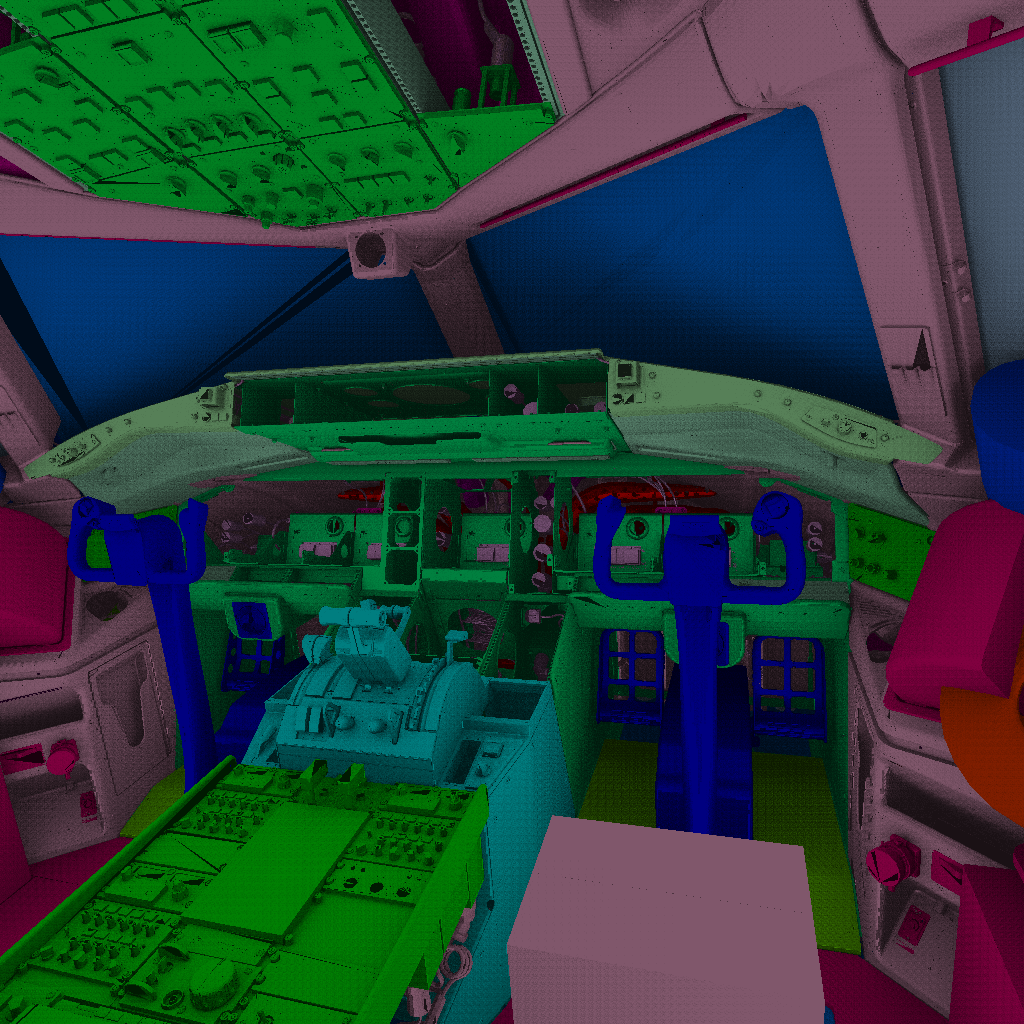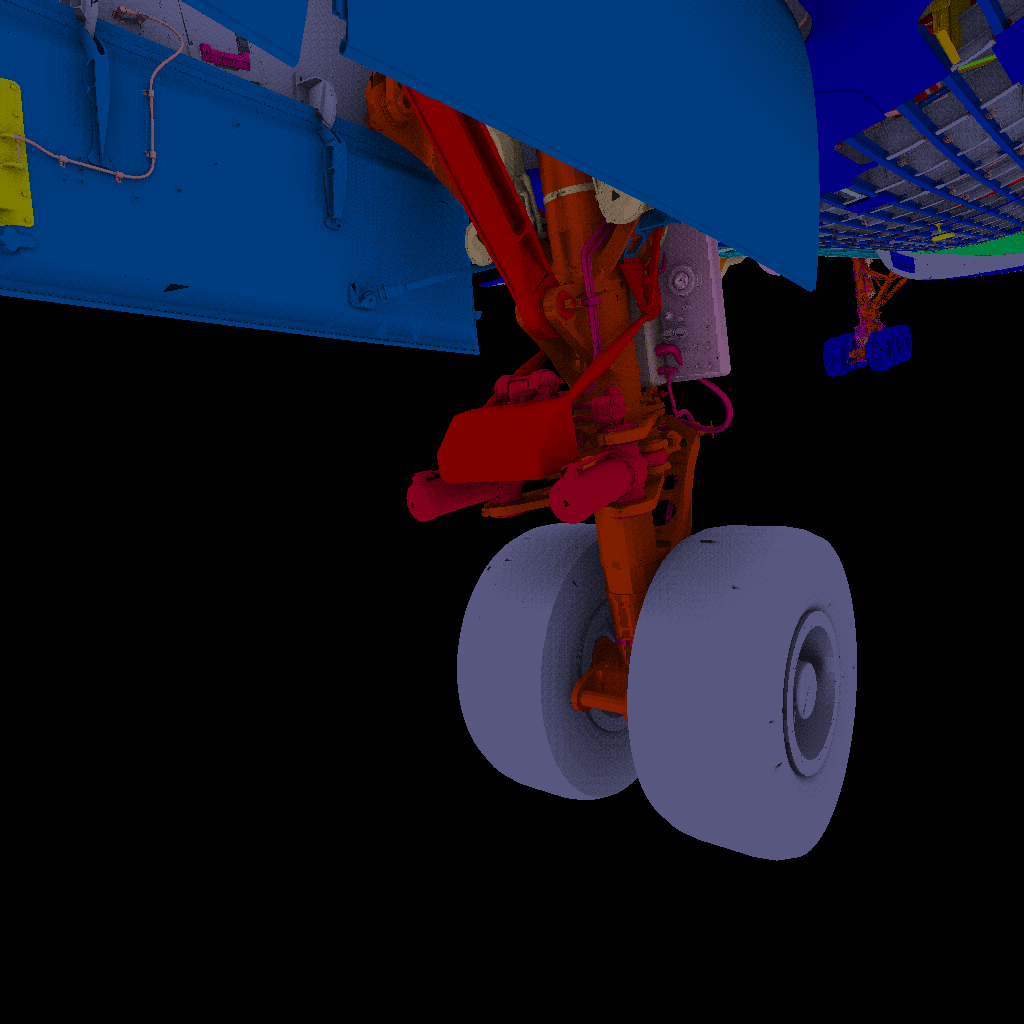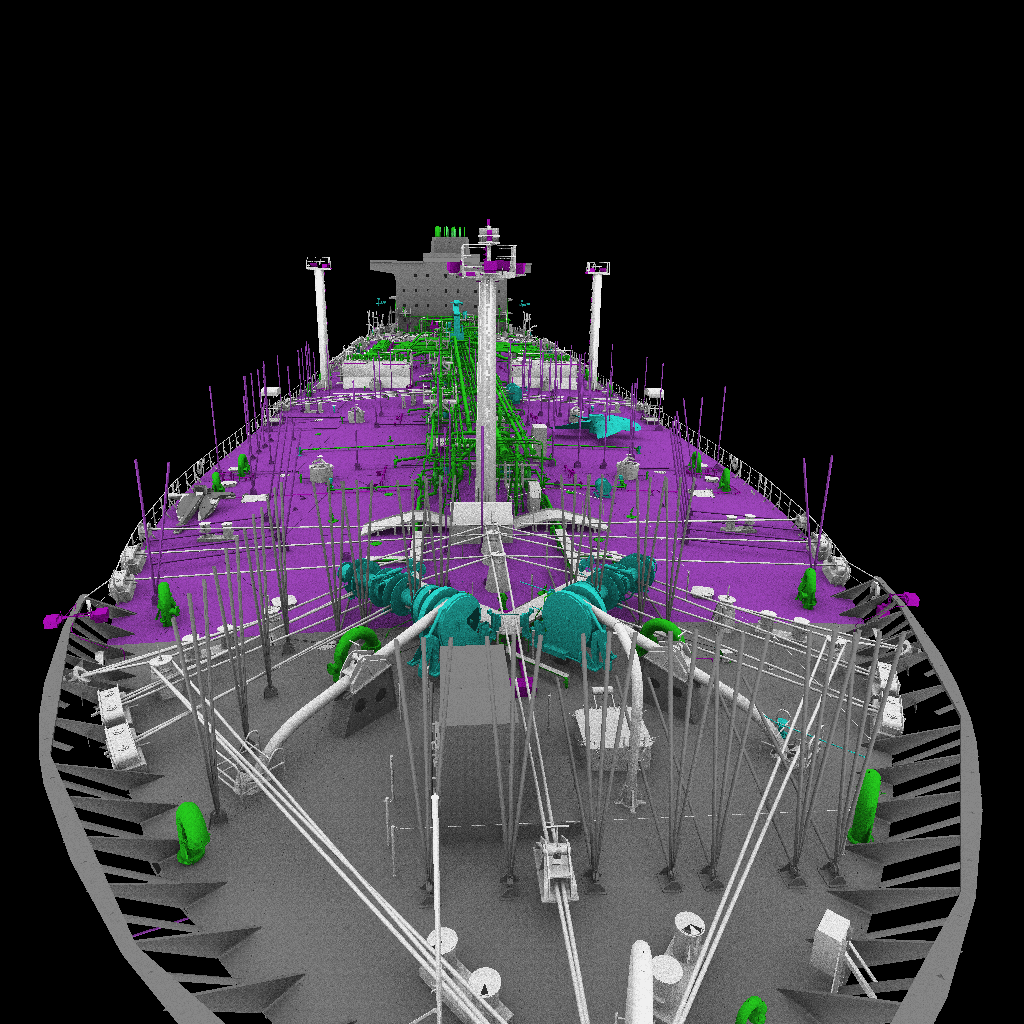ReduceM:
Interactive and Memory Efficient Ray Tracing of
Large Models
Interactive and Memory Efficient Ray Tracing of
Large Models
Christian Lauterbach1, Sung-Eui Yoon2, Min Tang1, and Dinesh Manocha1
1University of North Carolina at Chapel Hill
2Korea Advanced Institute of Science and Technology (KAIST)
 |
 |
 |
| Multiple views from the 360M triangle Boeing 777 model rendered interactively with 16 ambient occlusion rays/pixel. | ||
Abstract
We present a novel representation and algorithm, ReduceM, for memory efficient ray tracing of large scenes. ReduceM exploits the connectivity between triangles and decomposes the model into triangle strips. We also describe a novel stripification algorithm, Strip-RT, that can generate long strips with high spatial coherence optimized for ray tracing. We use a two-level traversal algorithm for ray-primitive intersection. In practice, ReduceM can significantly reduce
the storage overhead and ray trace massive models with a hundreds of millions of triangles at interactive rates on desktop PCs with 4-8GB of main memory.
 |
 |
 |
| Other models rendered with our representation; from left to right: Powerplant (12.7M triangles), Double Eagle tanker (82M), St.Matthew (372M) | ||
Video
Powerplant walkthrough (MP4)777 walkthrough (MP4)
All videos are real-time captures from our system rendered with 16 ambient occlusion rays/pixel.
Publications
ReduceM: Interactive and Memory Efficient Ray Tracing of Large Models
(Proc. of EGSR 2008)
Related Links
GAMMA Research Group
Ray Tracing Research at GAMMA
Acknowledgements
RDECOM
NSF
ARO
DARPA
KAIST
Models courtesy of Boeing corporation, the Stanford Scanning Repository and anonymous donors.